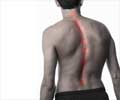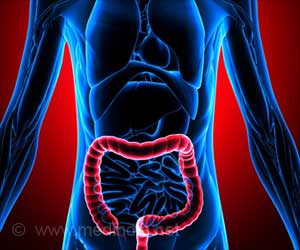A collaborative study led by researchers at Washington University School of Medicine has discovered the first gene linked to Scoliosis, a disease that affects about three per cent of children.
A collaborative study led by researchers at Washington University School of Medicine has discovered the first gene linked to Scoliosis, a disease that affects about three per cent of children.
The finding, published in the American Journal of Human Genetics, is significant because the causes of scoliosis have remained a mystery for centuries.It lays the groundwork for determining how a defect in the CHD7 gene, which is thought to play a critical role in many basic functions in the cell, leads to the C and S-shaped curves that characterize scoliosis.
"Hopefully, we can now begin to understand the steps by which the gene affects spinal development," says Dr. Anne Bowcock, Professor of Genetics, Medicine, and pediatrics.
"If we understand the genetic basis of the condition, we can theoretically predict who is going to develop scoliosis and develop treatments to intervene before the deformity sets in. It may take many years to accomplish these goals, but I think it will eventually happen," she adds.
The researchers believe that the reason behind why scoliosis runs in families may be because the condition is likely caused by several different genes that work in concert with one another.
Dr. Bowcock believes that scientists will soon come up with other genetic findings associated with the disease.
Advertisement
"This led us to consider that milder variations of CHD7 may be involved in other types of scoliosis," Bowcock said.
Advertisement
Upon analysing the data by conducting genome-wide scans, the researchers found that patients with scoliosis very often had a defect in the gene's non-coding region, an indication that the error did not disrupt production of the CHD7 protein.
The researchers speculate that this particular mutation alters the binding of a molecule that controls whether the gene is turned on. They think the gene is turned off more often than it should be, which reduces the amount of CHD7 protein produced.
"The change in the amount of the protein produced is subtle, which correlates with the onset of scoliosis, which typically happens very gradually. This particular defect was so highly associated with scoliosis that it is either the real McCoy or is very closely linked to the defect that causes the condition," explains Dr. Michael Lovett, Professor of Genetics and Pediatrics.
The researchers say that they will continue to look for genetic variations involved in scoliosis by studying additional families with the condition.
Source-ANI
SRM/S








